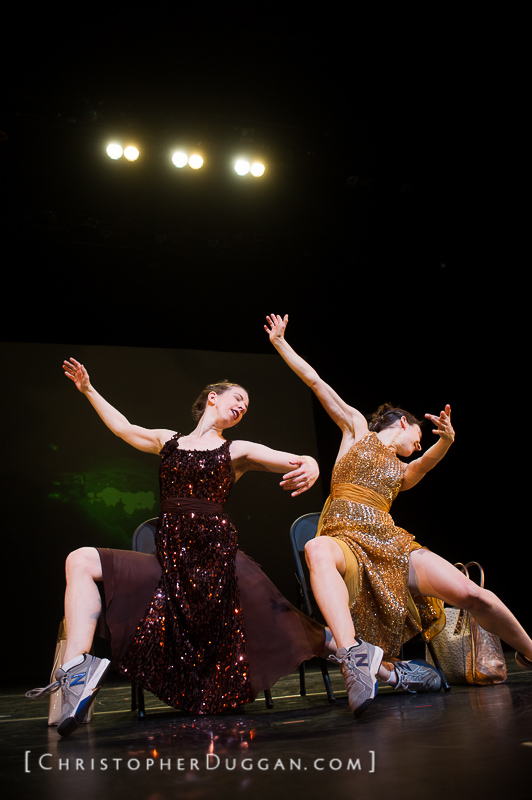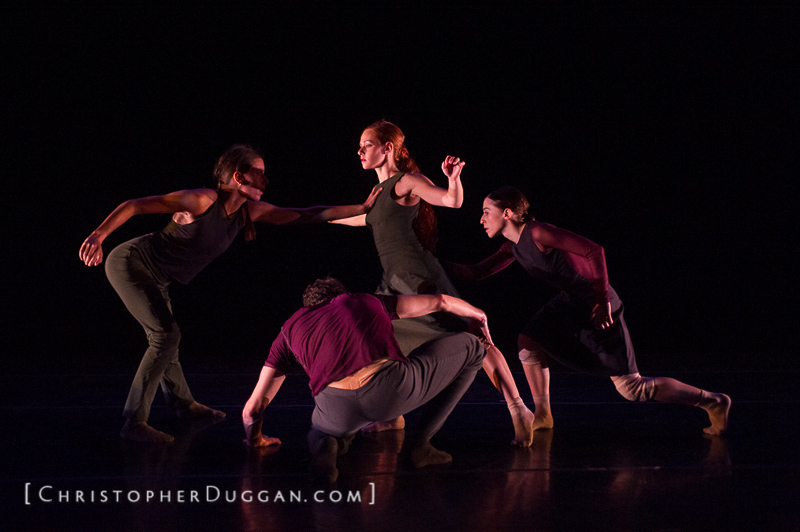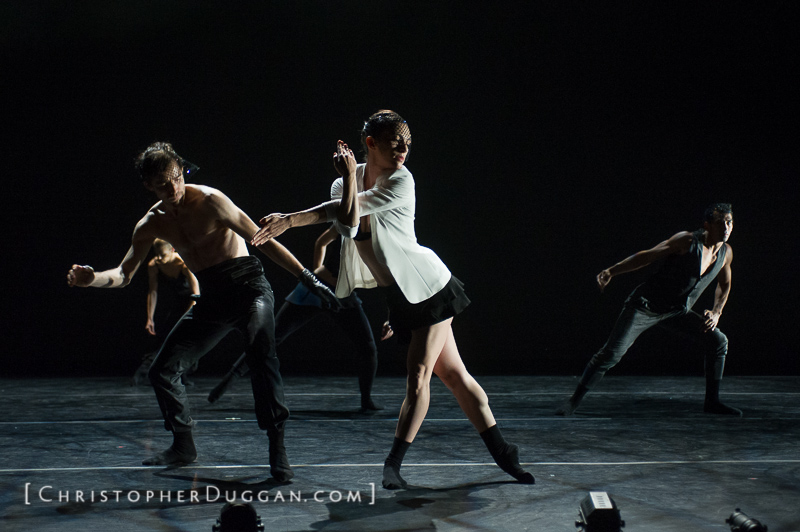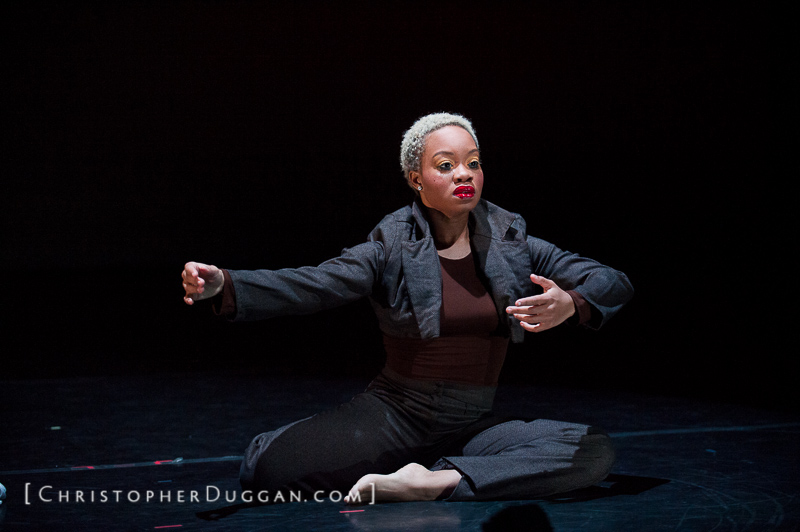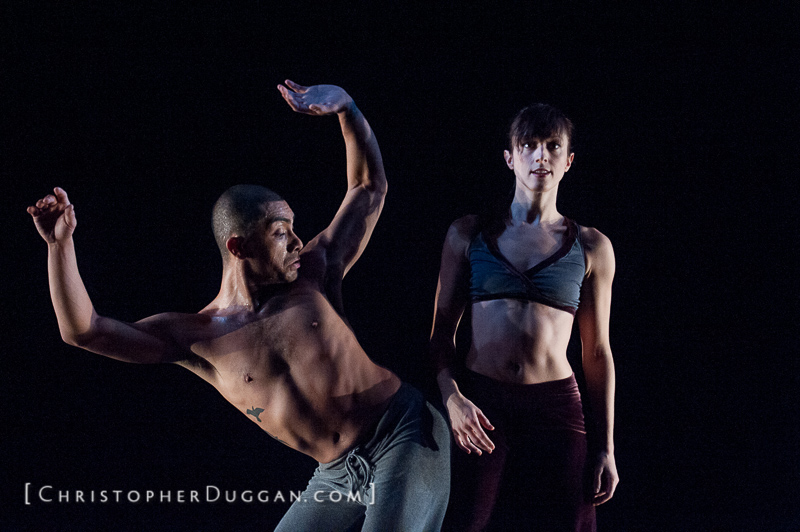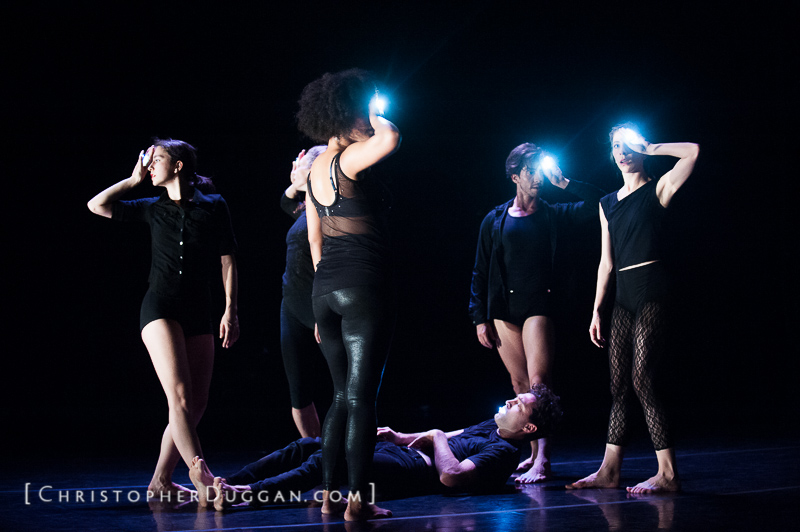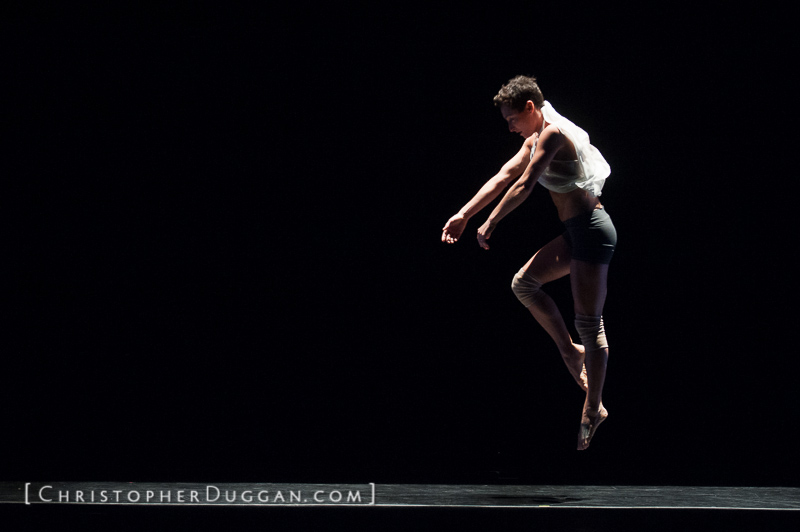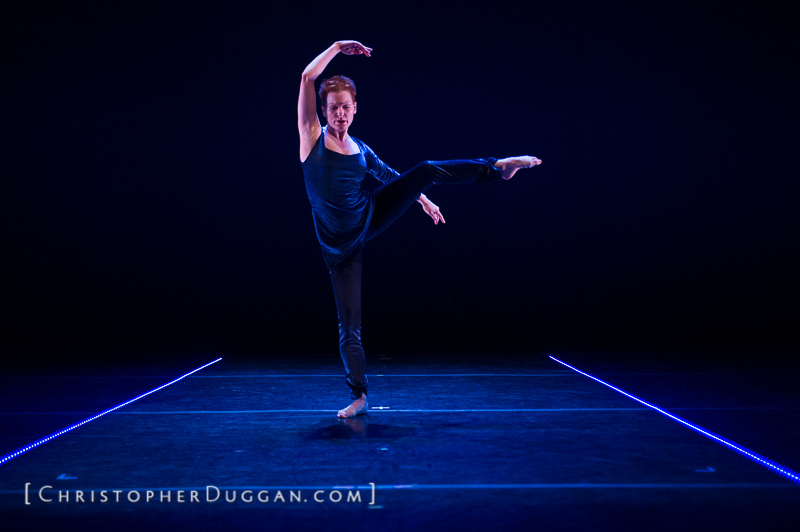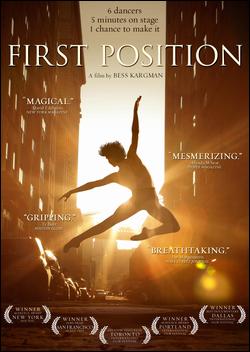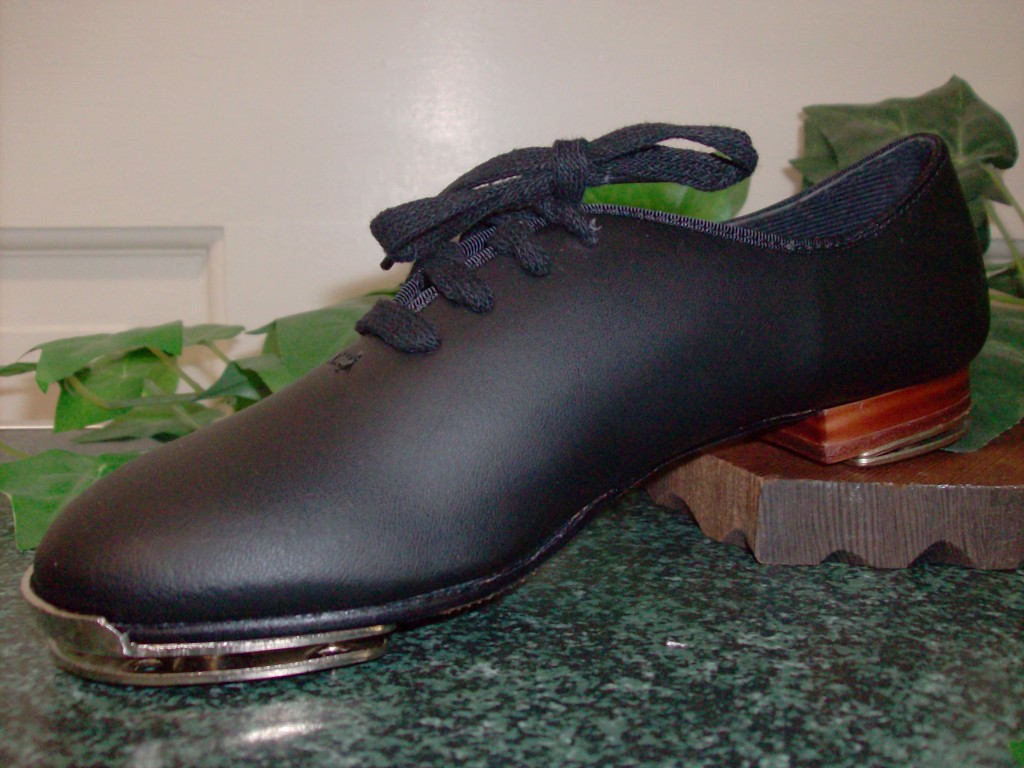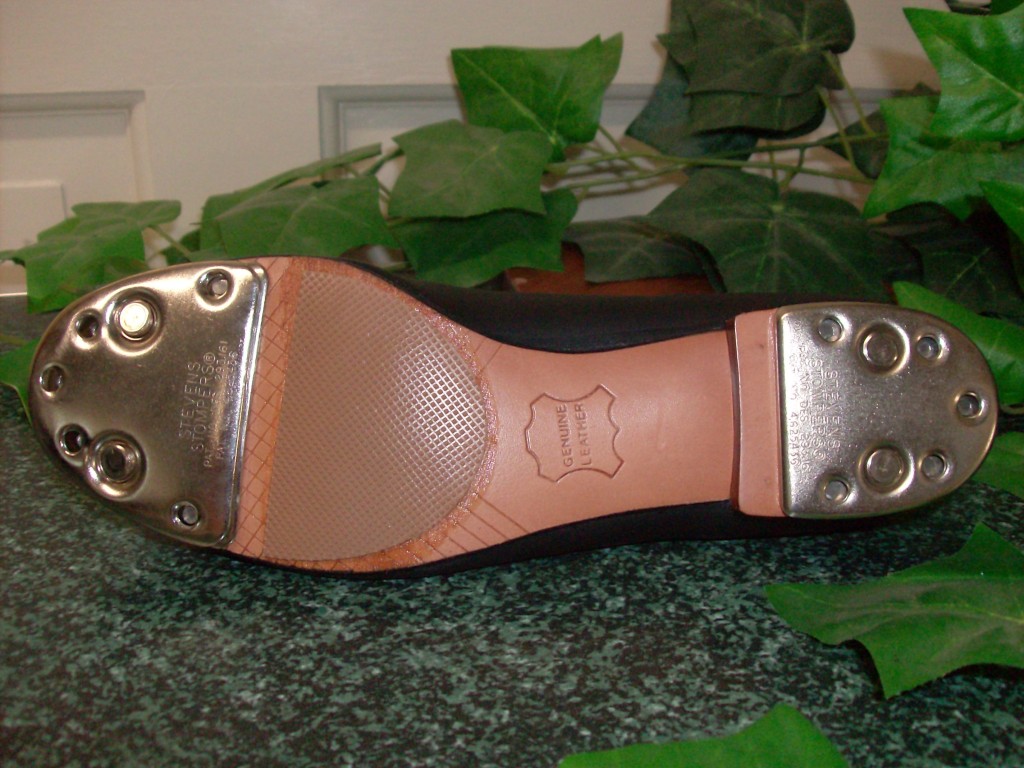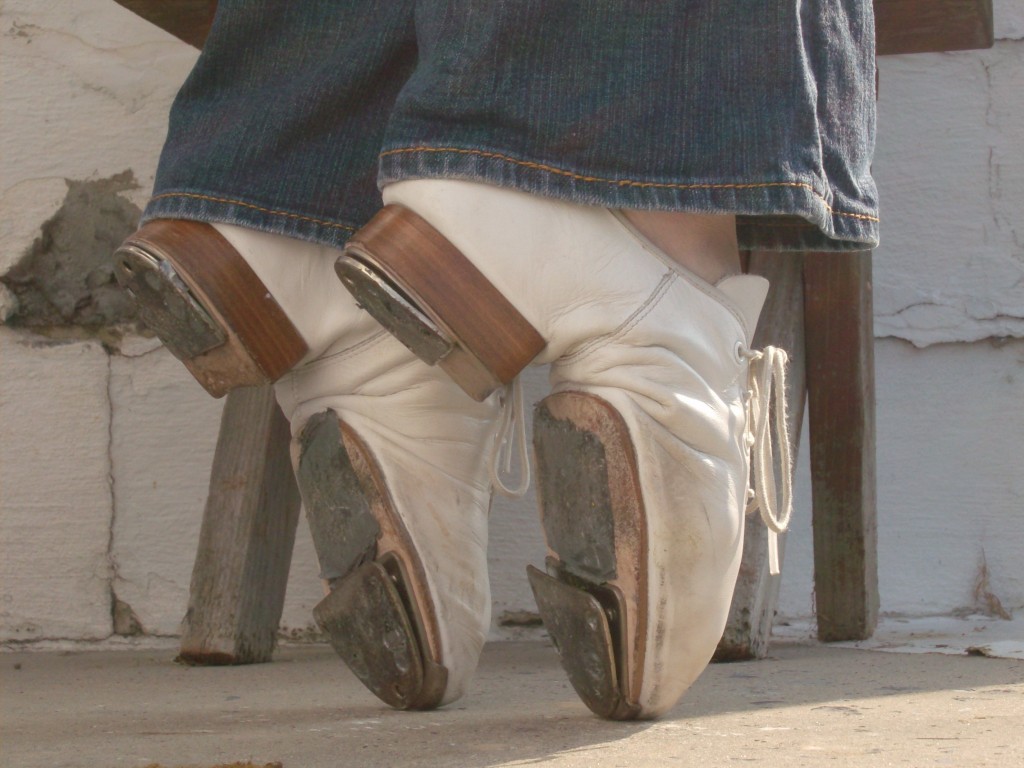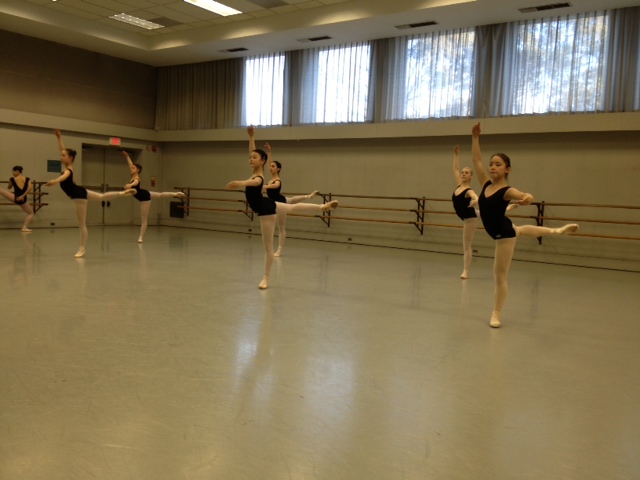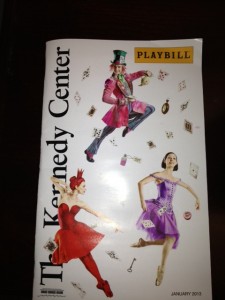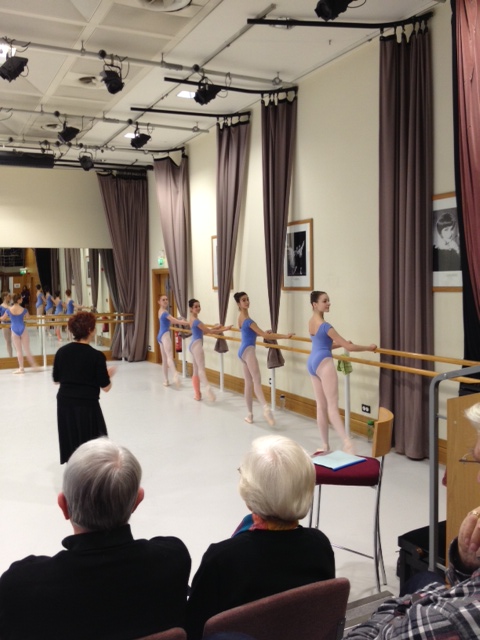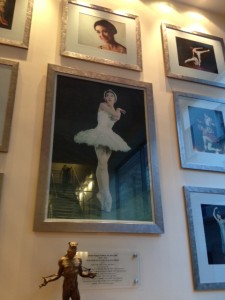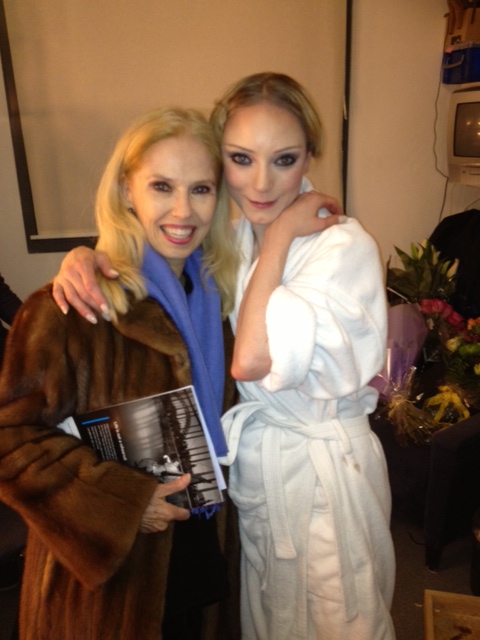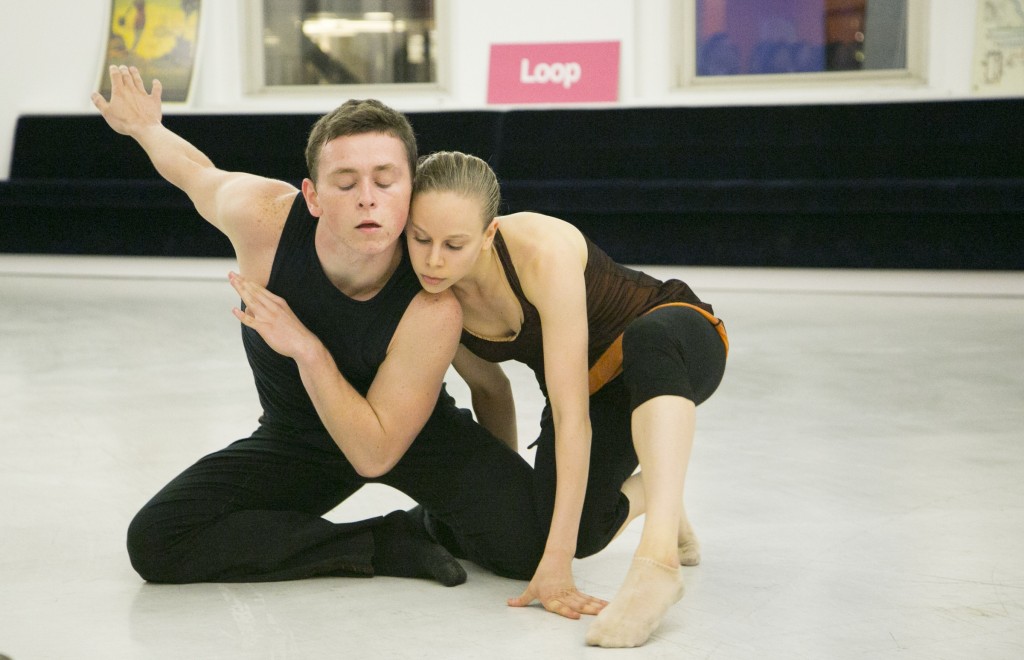
by Lissa Smith
The similarities between startup tech companies and dance companies, while not always immediately apparent, are both striking and parallel in their structure and ultimate success. Hubbard Street Dance Chicago’s collaboration at 1871 Chicago is a shining example of what can happen when creative business meets the dance world.
The dancers of Hubbard Street 2 bring their passion and excitement to the Merchandise Mart on Monday evenings, to perform for entrepreneurs and participate in workshop forums. When not performing HS2 repertory, the dancers unleash individual creative movement, phrases and improvisations. The business leaders and dancers have both learned to appreciate the shared model for building a successful company, whether it makes dance or technology. Passion is the underlying fuel that is the commonality of both new business ventures and dance works. Both dancers and entrepreneurs see their work as filling gaps in their respected fields. Dancers and tech participants work together, often outside their comfort zones, to unravel what is necessary to building a successful framework, while consultants from ClearSpace and Strategos keep all of us moving.
Event themes such as Lead and Innovate direct participants to break down the building blocks that provide the steps used to assure successful performances or outcomes. Creative thought and movement, group cooperation, and acceptance of leadership and guidance sum up the shared recipe for successful dance and tech companies alike. Both parties have learned that there is inherent risk involved in the development of their careers, but that risk-taking is also vital. This unique program has brought together the arts world and business world, taking two unlikely compatriots, and teaching them that what they do everyday in their separate worlds is what is necessary to reach what is surely a common goal: great results.
At our first 1871 event, we looked at an idea at its starting point, through its development, and where its evolution eventually led. I chose a clear starting point and, gradually throughout the performance, expanded it. This performance was satisfying for me, because it included a lot of our own creative expression and movement, rather than being a presentation of choreography we perform in theaters.
Also in this back-and-forth collaboration, 1871 residents were invited to see Hubbard Street’s main company with HS2 in One Thousand Pieces by our resident choreographer, Alejandro Cerrudo. Our company continues to visit 1871, and its members continue to come into our spaces, opening eyes and minds on both sides to new outlooks and ideas.
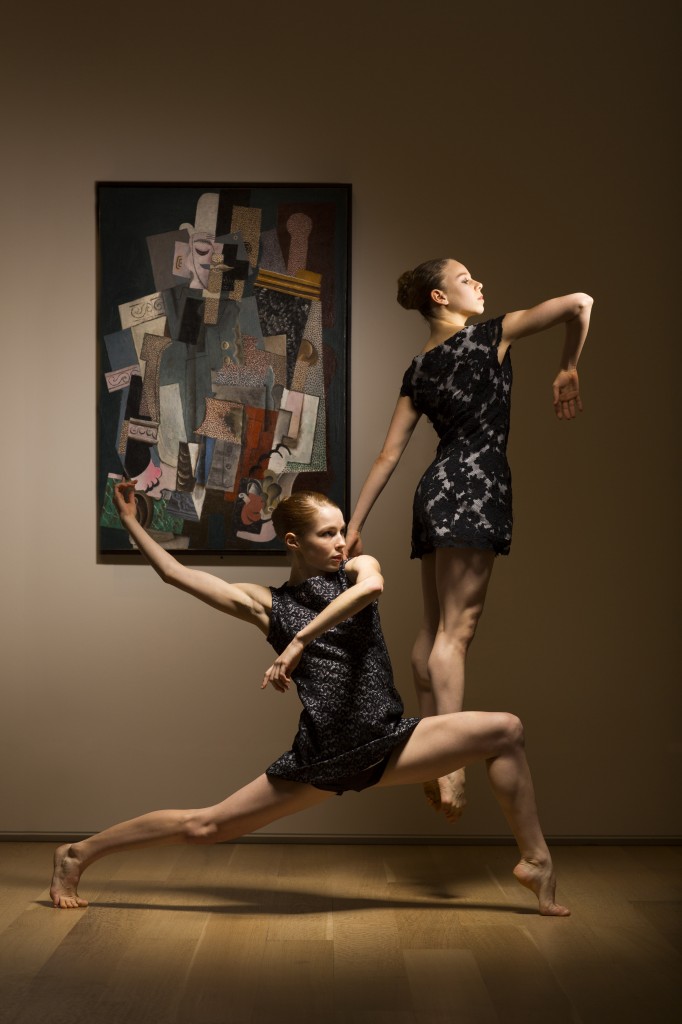
Another Hubbard Street Dance Chicago alliance worthy of mentioning is its partnership with the Art Institute of Chicago. Similar to the 1871 collaboration, this program also brings together two things seemingly unlike: art objects and moving bodies. Dancers use movement to interpret the themes and ideas in famous artworks, often performing in front of the actual pieces themselves. These performances are always site-specific, which allows both the dancers and the audience members to bridge their attention and engage in appreciation of similarities between visual and performing arts.
The most recent Art Institute of Chicago performance Hubbard Street 2 participated in, “What is Blue?”, began a spring miniseries relating to the exhibition “Picasso and Chicago.” This first performance was described as a discovery of the artist’s social consciousness. Griffin Court was the site of this incredible performance — the vast, open space, a live guitarist, and Picasso’s art projected behind us provided endless inspiration for us dancers and the audience alike. My favorite work by Picasso is his Guernica, an oil-on-canvas created in 1937. The color-scheme of this piece is black, blue, grey, and white; it describes the bombing of the village of Guernica during the Spanish Civil War. I love everything about this piece: its horizontal length and dimensions, the angular shapes and, especially, the extreme emotion it conveys.
Something new and surprising is a regular occurrence at the Art Institute when Hubbard Street dancers are in residence — catch us back at the museum on March 21 at 6pm, for our next Picasso-themed event, “Why Cubism?”
BIO: Contributor Lissa Smith, age 21, was born and raised in Miami, Florida. She is currently dancing with Hubbard Street 2 of Hubbard Street Dance Chicago. She attended The Boston Conservatory where she was both a Dance Conservatory Scholarship recipient and Jan Veen Dance Scholarship recipient.
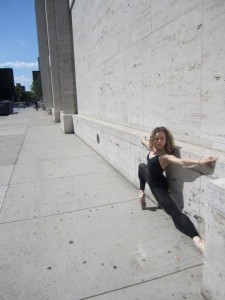 Lissa has trained at the prestigious Jacob’s Pillow Dance Festival, Hubbard Street Dance Chicago, The Juilliard School, Alonzo King’s Lines Ballet, The Martha Graham School, The Joffrey Ballet School and The Joffrey Midwest Workshop. Lissa has worked with world renowned choreographers such as: Thang Dao, Peter London, Alberto Del Saz, Maurya Kerr, Clébio Oliveira, Penny Saunders, Hofesh Shecter, Didy Veldman, Uri Sands, Gregory Dawson, Stephen Pier, John Magnus, Josée Garant, Viktor Plotnikov, Robyn Mineko Williams, Tony Fabre, and Judith Jamison. She has danced principal roles such as: “Yellow Girl” in “Diversion of Angels”, “Conversation of Lovers” within “Acts of Light” and “Frontier”, the solo choreographed by Martha Graham and staged by Yuriko and Susan Kikuchi along with Yasuko Tokunaga.
Lissa has trained at the prestigious Jacob’s Pillow Dance Festival, Hubbard Street Dance Chicago, The Juilliard School, Alonzo King’s Lines Ballet, The Martha Graham School, The Joffrey Ballet School and The Joffrey Midwest Workshop. Lissa has worked with world renowned choreographers such as: Thang Dao, Peter London, Alberto Del Saz, Maurya Kerr, Clébio Oliveira, Penny Saunders, Hofesh Shecter, Didy Veldman, Uri Sands, Gregory Dawson, Stephen Pier, John Magnus, Josée Garant, Viktor Plotnikov, Robyn Mineko Williams, Tony Fabre, and Judith Jamison. She has danced principal roles such as: “Yellow Girl” in “Diversion of Angels”, “Conversation of Lovers” within “Acts of Light” and “Frontier”, the solo choreographed by Martha Graham and staged by Yuriko and Susan Kikuchi along with Yasuko Tokunaga.
Lissa was the soloist lead dancer in both Thang Dao’s contemporary ballet, “Foil” and Greg Dawson’s contemporary ballet, “Eclipsing Venus”. She has also performed Jose Limon’s “Choreographic Offerings” staged by Jennifer Scanlon and Libby Nye. Lissa has performed the “Doll with Broken Head” solo from within “Mechanical Organ” choreographed by Alwin Nikolais, staged by Alberto Del Saz. Lissa received the “Modern Dance Award” and the “Dean’s Dance Award” upon her graduation from New World School of the Arts High School in June 2009 and won the “Arts For Life!” dance scholarship in 2009 presented by Former First Lady Columba Bush.
In 2012, Lissa was awarded the Martha Hill Young Professional Award.
Lissa’s posts on 4dancers are her own opinion and in no way reflect the thoughts or opinions of her employer, Hubbard Street 2.





